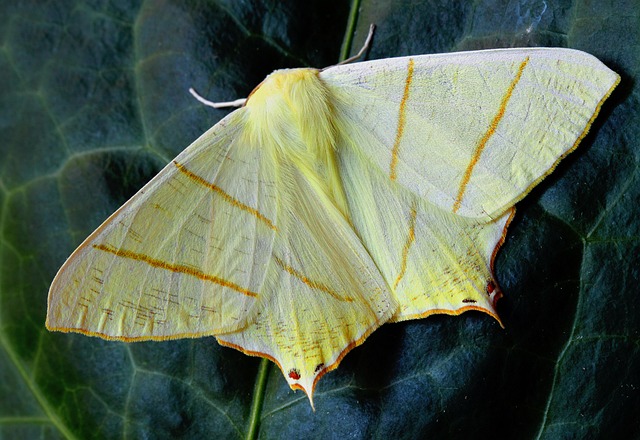Clothes moths, tiny nocturnal creatures from the Tineidae family, infest textiles high in keratin, a protein found in natural and synthetic fibers. They breed rapidly by laying eggs in clusters, with larvae feasting on fabrics and creating silken webs. Regular cleaning, proper storage, and vigilant monitoring are key to clothes moths removal before infestations escalate. Prevention involves maintaining a clean, clutter-free environment, good ventilation, and storing textiles in airtight containers. For severe cases, professional clothes moth removal services combine vacuuming with HEPA filters, natural repellents, and targeted treatments like insecticides or heat to eradicate all stages of the pest's life cycle.
“Stay one step ahead of unwanted guests in your home with our comprehensive guide to tackling clothes moth removal. Discover the secrets to implementing effective maintenance plans, ensuring your properties remain moth-free. This article breaks down the intricacies of these persistent pests, from understanding their behavior and diet to identifying signs of an infestation.
We’ll equip you with powerful prevention strategies and essential cleaning techniques for complete clothes moths removal.”
Understanding Clothes Moths: Behavior and Diet
Clothes moths are a common household pest known for infesting textiles, including clothing, carpets, curtains, and furniture fabrics. These moths belong to the family Tineidae and are attracted to materials containing keratin, a protein found in various natural fibers like wool, silk, cotton, and synthetic fabrics. Understanding their behavior and diet is crucial when developing an effective clothes moth removal strategy.
The adult clothes moths typically measure less than 1 cm in length and have distinctive wing patterns that range from pale gray to brown. They are nocturnal creatures, preferring dark, quiet spaces, and are highly sensitive to light. Their diet primarily consists of keratin-rich materials, which they can easily digest and spin into silk as part of their life cycle. Clothes moths reproduce rapidly, with female moths laying eggs in clusters on suitable hosts. The larvae that emerge from these eggs feed on the fabric, causing damage and leaving distinctive silken webs behind. Regular cleaning and proper storage practices are essential to disrupt their breeding cycle and prevent clothes moth removal challenges.
Identifying Signs of a Moth Infestation
Moth infestations can often go unnoticed until they’ve become severe, making it crucial to be aware of potential signs. One of the most obvious indicators is the presence of moths themselves – adult moths or their cocoons – in areas where textiles and fabrics are stored. Clothes moths removal requires a thorough inspection of your property, focusing on dark, undisturbed corners where moths prefer to lay eggs.
Other visible signs include webbing, which looks like fine silk threads and can be found in crevices, and distinctive noticable holes in fabrics, especially in carpets, curtains, and clothing. Regularly checking for these signs is an essential part of any ongoing maintenance plan to keep properties moth-free.
Prevention Strategies: Keeping Moths at Bay
Prevention is key when it comes to keeping properties free from moths. Regular cleaning and vacuuming are essential, as moths are attracted to dirt, dust, and fibers. It’s important to vacuum areas where moths tend to hide, such as under furniture, in corners, and along baseboards. Vacuuming regularly helps remove any moth eggs or larvae that may be present.
Additionally, maintaining a clean and clutter-free environment is crucial. Moths are drawn to dark, hidden spaces, so keeping areas well-ventilated and illuminated can deter them. Store clothing and textiles in airtight containers or moths-resistant bags, and avoid leaving laundry lying around. Regularly checking for any signs of moth infestation and taking swift action with appropriate pest control methods, such as natural repellents or professional clothes moths removal services, can also significantly reduce the risk of an infestation.
Effective Cleaning and Treatment Methods for Moth Removal
Effective cleaning and treatment methods are essential for successful clothes moth removal. Regular vacuuming with a HEPA filter is crucial to eliminate eggs, larvae, and adult moths from fabrics and textiles. Pay special attention to areas where moths tend to congregate, such as corners, seams, and creases of furniture, carpets, and drapes.
In addition to vacuuming, applying natural repellents like lavender, cedarwood, or tea tree oil can help deter moths from infesting your property. For severe infestations, professional pest control services offer safe and effective treatments tailored for clothes moth removal. These methods include targeted application of insecticides and heat treatment to eliminate all stages of moth development.
Moth infestations can be a persistent issue, but with proactive measures, clothes moth removal is achievable. By understanding their behavior, identifying signs early, and implementing effective prevention strategies, you can significantly reduce the risk of these pests taking over your properties. Regular cleaning, proper storage, and professional treatments are key components of an ongoing maintenance plan. Remember, a proactive approach to clothes moths removal ensures a cleaner, more comfortable environment for residents or tenants.
